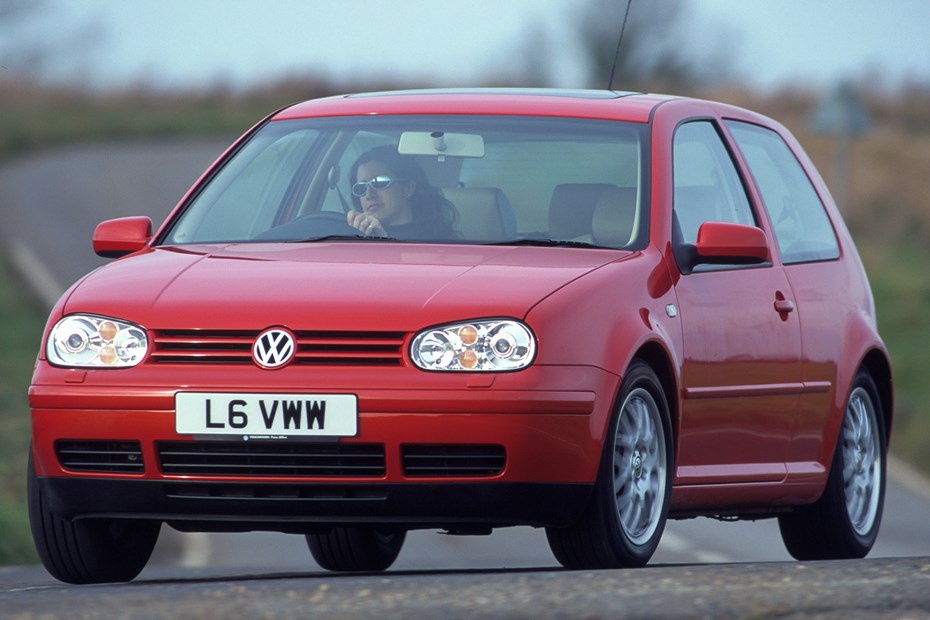Want a sensible small car that’s not too small? A Volkswagen Golf is perfect – and the Mk4 is now a bargain. Find a good one with our VW Golf Mk4 used buying guide.
Volkswagen’s Golf hatchback arrived in the UK in 1974, and established a solid reputation very rapidly. Popular with new buyers, the Golf became one of the most desirable used cars in Britain, with strong resale values and a track record of reliability and resistance to rust. After years of quirky air-cooled VWs, the refined, practical and well-made Golf was a revelation – and perfect for 1970s Europe, where the hatchback soon eclipsed the traditional saloon.
The Golf Mk2 consolidated that reputation with a tough, thorough facelift. However, 1991’s all-new Golf Mk3 was a rare mis-step for the successful German marque; not bad, as such, but a solid C from a grade-A student. Critics were not impressed with the new car, and its propensity for cosmetic rust, poor quality components and less efficient, enjoyable nature dissuaded used buyers as well.
When the Volkswagen Golf Mk4 arrived in 1997, it addressed most of the criticisms by using a new platform developed for the Audi A3; it went on to become a template for Volkswagen Group’s rapid expansion via a diverse range that included the New Beetle, Audi TT, Skoda Octavia and SEAT Leon. It restored the Golf’s reputation as a solid used buy as well.
What’s so good about the Golf Mk4?
Reviewers and buyers alike soon found that 1997’s new Golf offered something very different to its predecessors. More power, sophistication and refinement, a greater range of engines, and a clear move upmarket for ‘the people’s car’. Why? VW Group encompassed more brands than ever, and in a global economy, these pockets of national identity – in essence, the ‘people’s car’ for every home country – now had to find their own identity as they went on tour.
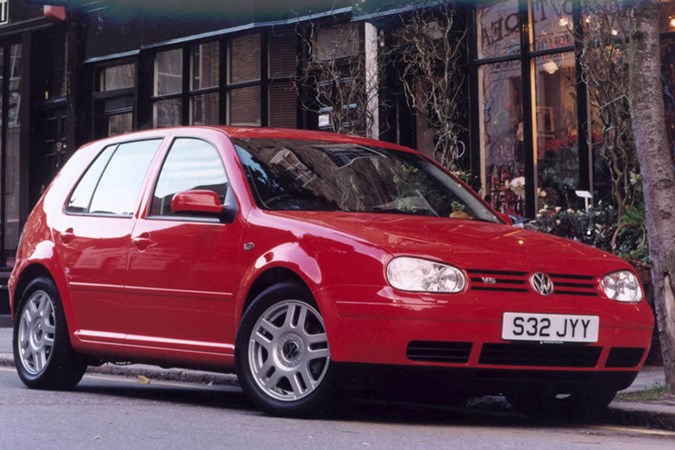
Skoda got the sensible, solid role. SEAT a fiery, affordable Audi image. Audi got more adventurous, design, and tech-first rather than just ‘tech supporting sensible’, and VW? VW went for quiet excellence. Quality without shouting about it.
Volkswagen’s strategy worked – evolutions of the Audi A3/Golf Mk4 have invariably ranked highly among the best hatchbacks on offer in the UK – and that success means the Golf Mk4 and its various offshoots are sensible, yet rewarding, secondhand buys as well.
Which VW Golf Mk4 is best for me?
There are four bodystyles of VW Golf Mk4, to cover most needs. You can choose from a three- or five-door hatchback, a five-door saloon and a four-door saloon sold under a different name (the Bora). You could still buy a Golf Cabriolet, but it was a continuation of the Golf Mk3 Cabriolet facelifted to match the new model.
Although the Golf Mk4 hatchback is the essence of ‘Golf’, it comes in economy, luxury and fast flavours that are wider apart than previous generations. Performance fans will appreciate the impressive Golf R32, which pushes the GTI’s legacy towards four-wheel drive, rally-homologation levels beyond even the Mk2 Rallye, whereas the smallest petrol and diesel models offer great economy. The best Golf Mk4 for commuting, younger families and daily driving is a five-door hatchback with an unstressed diesel or 2.0-litre petrol engine, unless you do a lot of very short trips.
The hatchback’s boot space, at around 330 litres, is reasonable for the size of car but smaller than the latest Golf. It’s very usefully shaped, with few intrusions. VW’s small estate is now a rare car – search for a used Golf Mk4 Estate and you won’t find many results. As such, the best Golf Mk4 for carrying large loads is actually a Skoda.
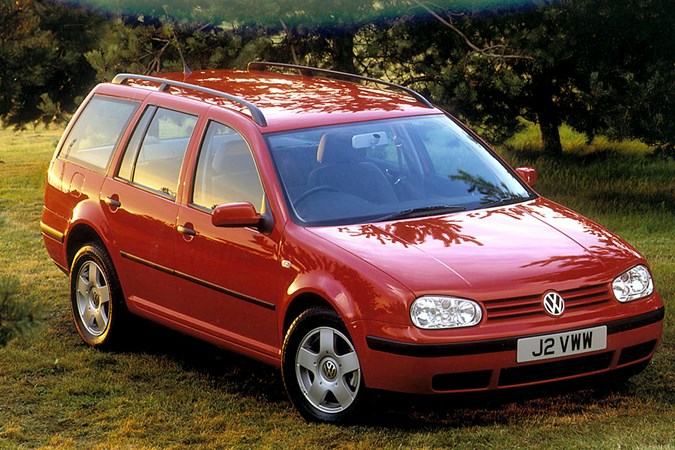
That’s the downside of basing so many cars on the same platform, but the upside is that if the Golf Estate’s 1,470 litre maximum cargo area sounds appealing you can shop for a Skoda Octavia Mk1 Estate instead. Realistically, you’ll find more Skoda Octavia Mk2 Estates for sale – and they’re very affordable, with up to 1,655 litres of space.
The Golf Mk4 Cabriolet is really a Golf Mk3, but offers a very sensible and low-cost route to open-top motoring. With a fixed roll hoop and four seats it has a very classic feel, more even than the retro New Beetle Cabriolet that replaced it. You’ve guessed it, a used Beetle Cabriolet is now so cheap that it’s the better buy.
Daily drives and long commutes are well served by the powerful diesels, as long as you’re not subject to emissions zones. Well-maintained, the PD diesel can return impressive fuel economy, but also represents the first wave of refined, quick models that turned Britain’s drivers away from unleaded.
For outright ease of maintenance, the 2.0-litre 8V petrol is hard to beat, though the 1.8 Turbo 20V offers a nicer balance of economy and performance, and is well-known and understood by specialists.
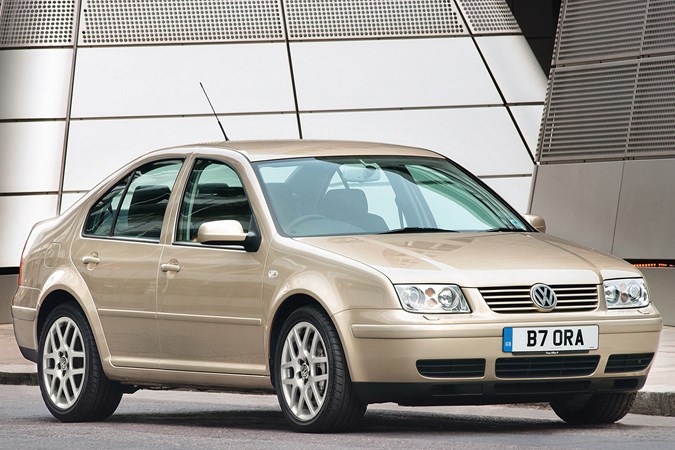
For an alternative to a BMW 3-series or Mercedes C Class, you could consider the Volkswagen Bora. This small saloon replaced the Vento, and was a popular subtle, economical upmarket company car with the more powerful diesel option. It’s now very rare, but due to the age of the cars a used Golf Mk5-based Jetta is the same price, more advanced and easier to get. Boras had a definite ‘image’ in the ’90s, and a good one is worth preserving.
If you want a fast Golf, the GTI is the legend – but it’s possible to tune the PD diesel and 150hp 1.8 for more performance without the classic car price. We would recommend avoiding the VR5 and VR6 models unless you’re buying a second car for fun; however, the all-wheel drive Golf VR6 4Motion isn’t far behind the R32 for performance.
As a rule, the automatic VW Golf Mk4 is best avoided. The exception to this is the R32, which introduced the DSG gearbox to VW’s range.
VW Golf Mk4 and Bora known faults and common problems
The Golf Mk4’s big advantage for used car buyers is in how many other cars it is related to. Skoda, Audi, SEAT and other VW models shared the tech and engineering, and the engines, brakes and suspension followed an evolutionary path so any experienced mechanic will have encountered something similar. It’s generally well made, too, but they have a few weak spots. One we have first-hand experience of is easily-detached captive nuts for the suspension arms, requiring subframe repair or replacement, for example.
When buying any VW Group car made after 1998, an old laptop and VCDS (VAG.com) diagnostic software is a worthwhile investment. It’s possible local forums and owners’ clubs may have members with the software willing to check a potential purchase with you.
1. Petrol engines – 1.4, 1.6 and 2.0-litre
The smaller engines in the VW Golf are fairly easy to maintain and well understood, but they work hard in this relatively heavy car. The 1.6 8V (8-valve) 100hp is arguably the worst choice, as it is not economical and oil consumption was significant even when new – though it’s a simple 8-valve design with low-RPM torque and quite pleasant in town. The 1.4-litre 16V 75hp may appeal for lower tax and running costs, but it suffers oil starvation, cam belt failure and bore wear; the 1.4 8-valve offered from 1998-2000 is a simple design and very robust.
Choose the 2.0-litre petrol and you get an old-school Golf GTI engine; injected, 8V and tough, though oil consumption remains a concern. It’s a safe bet for long-term ownership and DIY maintenance.
2. Petrol engines – 1.6 16v FSI, 1.8 20V, 1.8T 20V
Volkswagen’s new generation of engines is well-known for interchangeability, overall reliability and economy compared to the previous era. Of these, the 1.8T – 20V turbo – is the one to get, as it delivers performance worthy of the GTI badge, and can be tuned both in old-school and chip tuning methods. Neglected maintenance and oil changes will affect these as much as any car, but problems and breakdowns are usually related to the ignition and engine management. Beware undeclared modifications; not just for insurance reasons, each engine was designed for a different application with subtle component changes so ‘chipping’ to 180hp or 225hp may affect reliability. For more detail check out the VW Vortex 1.8T FAQ.
3. VR-engines – 2.3 VR5, 2.8 VR6, 3.2 VR6 R32
After the VR6’s less than successful introduction in the Golf Mk3, VW persevered and the Golf Mk4 got a 2.3 VR5 and a higher performance 3.2-litre. The VR6 is available with 4Motion all-wheel-drive, which is related to the Audi A3 Quattro system with a Haldex differential. That needs regular fluid changes (40,000 miles) but is reliable if looked after.
The VR5 is a smooth, refined engine with a distinctive sound. 150hp 10V and 170hp 20V from 2000-on. The VR6 is more complex, but both engines share a narrow-angle ‘staggered inline’ appearance with a single cylinder head and chain driven camshafts; on all models this is now a source of problems, along with oil sludge and ignition issues. The VR5 is a little easier to work on, but unless you are determined to own a Golf V5 the 1.8T is a much better car overall.
As a high-performance model the Golf R32 is worth investing in and maintaining well. Any signs of misfire, rattling or knocking, walk away unless it’s being sold as a project; check oil and coolant condition carefully and inspect the serpentine belt, listen for whirring or growling.
4. Diesel engines – 1.9-litre SDI, TDI and PD
All Golf Mk4 diesel engines are 1.9-litre four cylinder, and well-known for reliability and ample power. High-pressure PD engines (90, 100, 130hp) are cleaner, but not compatible with WVO or ‘veg-oil’; some commercial biodiesels are incompatible as well. Some users report success, but we’d avoid any PD that has been run on veg oil.
While you can’t trust the badge to be original, the TDI badge should match the engine power – chrome for 90hp, red I for 100 PD/110, red DI for 115/130 and red TDI for 150hp. As with the 1.8T, beware of undeclared modifications.
Look for clean exhaust, oil without a diesel odour or claggy viscosity, and easy cold starting. These engines are easy to maintain, and are worth looking for near ULEZ zones as owners dispose of non-compliant cars.
5. Automatic gearboxes – including R32 DSG
There’s a simple rule when it comes to the Volkswagen Golf Mk4 (and derivatives) with the 01M four-speed automatic gearbox; avoid it. When it works it’s a perfectly inoffensive, smooth transmission, but thanks to poor build quality (it’s related to Renault designs of the 1980s) and ‘sealed for life’ servicing instructions, the only way for it to have survived outside of warranty is expert care and 40,000 mile services.
Specialists will happily relieve you of a four-figure sum to fit a reconditioned unit, but it will still be a terrible gearbox. If you need a small, reliable automatic hatchback, we’d suggest a Toyota Auris instead. Or a VW Golf MkV with a DSG gearbox.
Speaking of DSG gearboxes, the dual-clutch manual made its debut in the hot VW Golf R32. These early units had some teething troubles but have proved to be generally robust if serviced correctly, and now the transmission is well known there are plenty of specialists. Clutches do wear, so this isn’t a case of ‘it works or is broken’; on higher mileage R32s expect to pay for a gearbox rebuild and reset if you want perfect performance.
VW Golf Mk4: buying checklist
There’s nothing particularly unusual or worrying about the Golf Mk4 – but it shares weaknesses with many cars of the era, notably the transition to more environmentally friendly paints. Many cars will have lacquer peel and flat paint, and repairs will stand out. Front wings and tailgates are prone to rust, and the smooth roof and door design mean a greater risk of leaks as seals age.
On the interior, watch out for issues with the windows. Plastic guides can break, causing the window to drop; repair is quite involved but not difficult, and new parts are improved to resolve the issue. Check the boot floor and rear carpets for damp; if there are any signs of rust in these areas, it can be caused by faulty sunroof drains or it could be accident damage.
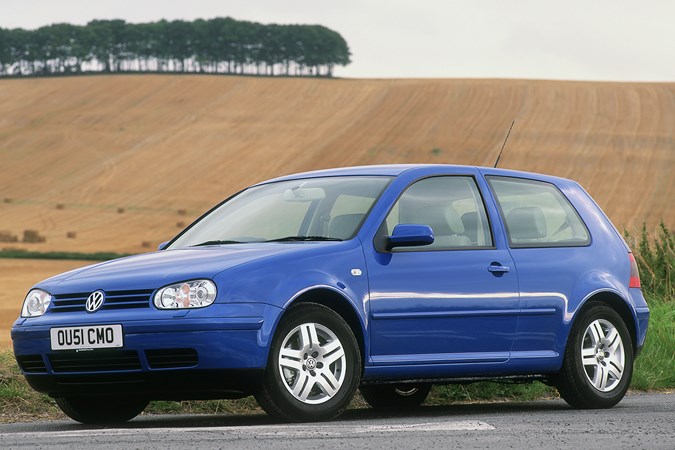
Gear linkages aren’t as precise as many modern cars, but manual gearboxes should engage smoothly and without much free play. Brakes are better than previous generations of Golf, and overall the handling should be neutral and free of knocks or harsh movements unless the car’s been modified.
Check the fan operates at all speeds, particularly on cars with climate control, and verify that the heater outputs to the selected vents. Finally, the central locking (and door locks in general) may need repair on older cars; linkages can fall off and that’s a good general rule for Mk4 Golfs and related cars – if it’s made of plastic and loadbearing, it is likely to break, and it’s also likely to be the first thing you should check before spending money on whole modules.
Maintaining your used Volkswagen for a long life
At this age the Golf’s service history is a nice to have, but if you do want to use a main dealer, check the schedule. VW offered long-life and fixed service intervals, and the oil used is different. I’ve got first-hand experience of paying a main dealer for a long-life service and the wrong (cheaper) oil being used, so I would recommend looking for cars that have had annual services over the variable interval.
If you buy a 4Motion, R32 or automatic, have the transmission looked after by a reputable specialist before problems arise. Changing Haldex fluid on all-wheel drive models is recommended at 40,000 mile intervals and there’s a complex process to get the level correct; likewise the best chance of that problematic automatic surviving is to change the fluid regularly. Keep an eye on the coolant and if you live in a hilly area, tow or carry a lot in the car, consider upgrading the gearbox to a separate oil cooler.
With regular oil, filter and coolant changes, and regular checks that the waterpump and belts are in good order, a VW Golf Mk4 can achieve immense mileages – meeting the reputation built up by the original M1 and Mk2 that inspired the phrase ‘like a Golf’.
Just so you know, we may receive a commission or other compensation from the links on this website - read why you should trust us.


